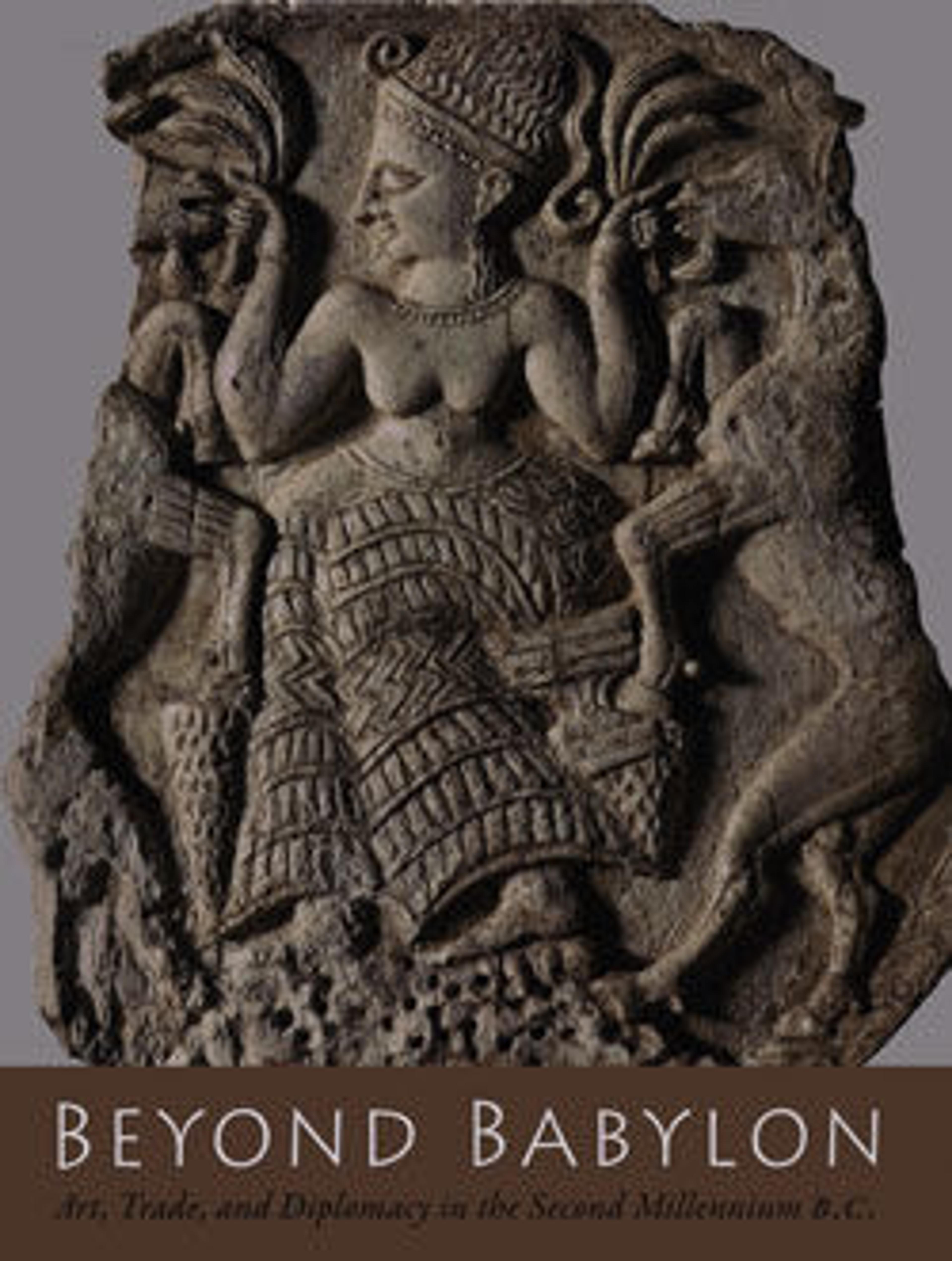Furniture plaque: female sphinx with Hathor-style curls
This figure belongs to a group of carved ivories, mostly furniture elements, probably found at the site of a palace at Acemhöyük in central Anatolia. Most of the ivories depict imagery borrowed and transformed from Egyptian sources, such as the sphinx represented by this plaque, a fantastic creature that combines a human head with a lion’s body, with or without wings. Although the bottom of the plaque is broken away, parts of the creature’s leonine hind leg and tail are still preserved. The sphinx has a hairstyle of long, curled locks similar to that worn by the Egyptian goddess Hathor. She wears a fillet across the forehead, above which three additional short curls rise. One lock is tucked behind a large ear. The eye, hollowed out to receive an inlay (now missing), and nose are prominent, and the mouth and chin are small. The overall gray color indicates that the object was exposed to considerable heat, perhaps during the destruction of the palace. A nearly identical plaque from the same group, depicting a sphinx facing left, is also in the Metropolitan Museum’s collection (36.152.2).
Artwork Details
- Title: Furniture plaque: female sphinx with Hathor-style curls
- Period: Middle Bronze Age–Old Assyrian Trading Colony
- Date: ca. 18th century BCE
- Geography: Anatolia, probably from Acemhöyük
- Culture: Old Assyrian Trading Colony
- Medium: Ivory (hippopotamus)
- Dimensions: 2 15/16 × 2 5/8 × 3/8 in. (7.5 × 6.6 × 1 cm)
- Credit Line: Gift of Mrs. George D. Pratt, in memory of George D. Pratt, 1936
- Object Number: 36.70.11
- Curatorial Department: Ancient West Asian Art
More Artwork
Research Resources
The Met provides unparalleled resources for research and welcomes an international community of students and scholars. The Met's Open Access API is where creators and researchers can connect to the The Met collection. Open Access data and public domain images are available for unrestricted commercial and noncommercial use without permission or fee.
To request images under copyright and other restrictions, please use this Image Request form.
Feedback
We continue to research and examine historical and cultural context for objects in The Met collection. If you have comments or questions about this object record, please contact us using the form below. The Museum looks forward to receiving your comments.
